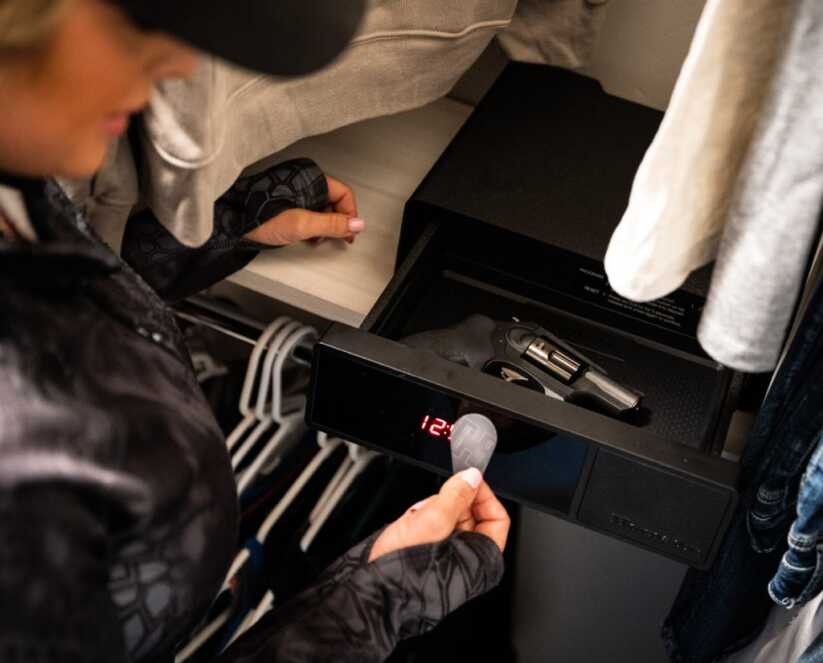
Our rifles can take a beating during hunting season, they are banged around in the truck, on an ATV or horse withstanding the elements of dirt and moisture. In order to preserve the investment that we make in our firearm and extend the life and functionality of our rifle, a few extra steps taken prior to storage will help you stay organized and your weapon system functioning flawlessly.

Confirming Data
Prior to cleaning or storing your firearm, take it back to the range. This may seem like an unnecessary step, however, I find it helpful to utilize this time to reconfirm zero, and ensure that the data from my ballistic solver is tracking at distance. This is also the first step in identifying any potential issues prior to storage with your rifle or optic.

Next, make notes on an index card, data book or range card stating what yardage you have zeroed the rifle and what is the farthest distance that you have confirmed data utilizing your ballistic solver with the corresponding ammunition type and bullet weight.
When you go to grab your rifle after a few months of storage, you will be able to quickly identify what bullet type and weight that the rifle is zeroed with, the zero yardage and the distance that your data has been confirmed from your ballistic solver. This will make the pre-hunt process much quicker and more organized.
Clean Your Rifle
How to clean a rifle is a somewhat debatable topic. Some shooters like to clean their barrels extensively taking them down to bare metal, removing all copper fouling, while others choose to only remove carbon fouling. Regardless of the method you choose, clean the bore, and use a cotton bore mop to clean the chamber ensuring that it is dry and free of dirt and debris. Inspect the bolt, removing any brass shavings using a nylon brush. Place a small amount of bolt grease on any metal-to-metal surfaces ensuring smooth operation.

Cleaning your optics is easily done by using a soft paintbrush or optics brush to remove any dirt and dust from the scope. Do not use canned air on the lens of your optic as this can cause damage. Alcohol wipes can be used on the lens surface to remove smudges and finish out the cleaning process with a microfiber towel or something similar that won’t leave any particles or residue behind.
Inspection
There is nothing that will ruin a hunt faster than loose parts with your rifle or scope. Double-check that the front and rear action screws, scope rings, and bases are torqued to the manufacture’s recommended settings. Look for any obvious cracks in the stock of the rifle, loose sling mounts, and that nothing is inside the channel of the barrel that prevents it from free-floating.
Also, be sure that the elevation turret has been returned to zero.
Storage Practices
We all have the shared responsibility to safely store firearms so that they are inaccessible to children and prevent them from being stolen by criminals. Please be mindful of your local state and federal regulations for firearm storage.
There are many affordable storage options for firearms that give the added safeguard that keeps your firearms out of the hands of unintended users and in compliance with applicable storage regulations.
Safe gun storage starts with unloading it and keeping it unloaded when you are not using it.
Chamber flags provide a quick visual confirmation that the firearm is unloaded and that there is no cartridge in the barrel of the firearm.
Magazines should be removed from rifles, bolt open, and to the rear. For added security, you can remove the bolt and store it separately.
Consider placing your firearm in a silicone-treated gun sock. These will protect your firearm from moisture, scratches, and dust.
And last, your ammunition should be stored in a locked container or case that is in a separate location from your unloaded firearms.
Storage Solutions
Cable Locks
Today, most firearms are sold with a free cable lock. These are simple to use as the cable runs through the barrel or action of the firearm preventing it from being fired and they require either a key or combination to unlock. These cable locks are a great deterrent, however, for added security, I recommend that you double up the safety measure by placing the firearm with a cable lock into a gun safe.

Lock Box
Lock boxes like the Hornady Rapid Safe Read Vault are a great way to store your firearm within your home. Lock boxes will vary as some are keyed, have a keypad access or touch, or touch-free entry.
Full-Size Gun Safe
A gun safe will protect its contents from not only theft but many are rated to protect your valuables from fire. A gun safe protects its contents from the elements and allows owners to safely store multiple firearms in one place.

These are just a few ideas for safe firearm storage. Ultimately, how you choose to store your firearm is your choice. For the greatest level of security consider using a combination of safety procedures and educate your family members about the safe handling of firearms and storage.
Taking the time to properly store your firearm will ensure that you are organized and that your firearm will be in top condition for your next hunt. This is a quick and easy investment for the years of enjoyment that shooting sports bring.


Damn…how much oil you put in your gun?
As a codicil, when the next season arrives, be sure to thoroughly examine your firearm before use. Insects and other nuisances have managed to infest such things as gun barrels and caused obstructions.
When I store my firearms I place them muzzle down . Reason oil will not go into wood on my firearm.